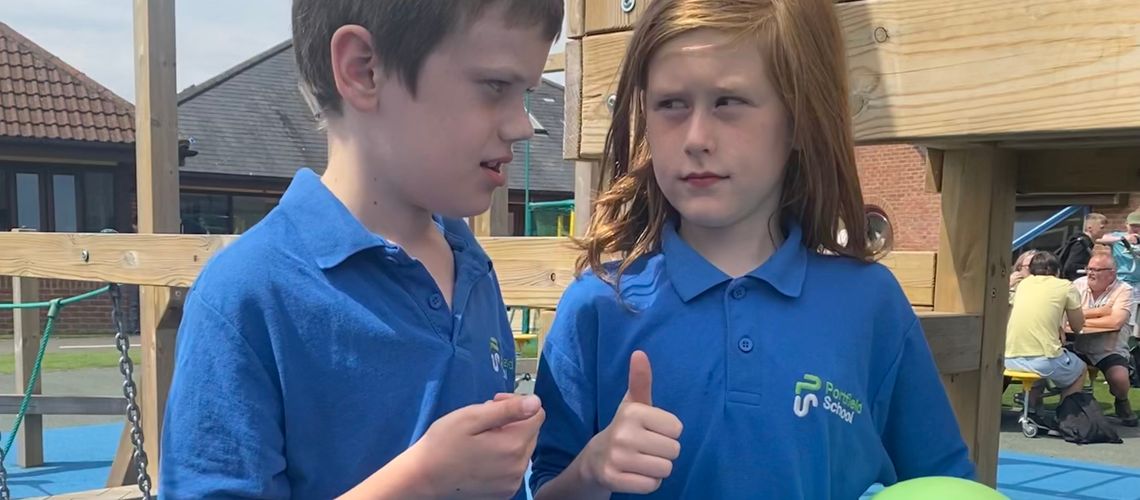Finley and Brodie's Friendship

Finley and Brodie are two of our Portfield School students who have struck up a heart-warming friendship after Brodie began to express an interest in learning to sign to communicate with Finley.
15 Sep 22
Finley is non-verbal and uses key world signing as way to communicate with others and ensure his needs are met. Signalong is the preferred method of learning sign at Autism Unlimited, so it is often used in the classroom.
Both eight years old, they share the same class and have gotten closer whilst playing on the trampoline together.
Since joining Portfield School, Brodie displayed an interest in learning the days of the week in sign, which was done every morning in circle time. This sparked his curiosity, and he would then ask how to sign the odd word here and there.
In lessons, students are always encouraged to sign the vocabulary being used. In addition to the days of the week, they would sign ‘good morning’ and some emotions.
Brodie will regularly sign words he knows to Finley, and when teacher Billie is signing, he will ask what she is saying to him or what Finley has signed to her.
One of the moments that stood out the most was when Brodie accidentally walked into Finley and verbally said ‘sorry’, but then asked how to sign it.
Brodie would pick up signs being used every day in the classroom and ask for specific signs, showing a real enthusiasm and desire to learn. During the morning challenge, they learnt the singalong alphabet, which he then went on to practice and show his family at home.
Signing enables non-verbal people to effectively communicate their needs, which in turn creates closer bonds through opening lines of communication, leading to greater social integration.
Signalong is a key word sign-supported communication system based on British Sign Language and is used in spoken word order. It uses speech, sign, body language, facial expression and voice tone to reference the link between sign and word.
There is already a noticeable difference, with Finley always making more direct eye contact when Brodie signs to him, and since Brodie began signing, Finley shows more interest in Brodie. After developing more of an understanding of Signalong, Brodie is much more open to playing with Finley on the trampoline.
Finley is able to feel more included in the conversation and it shows him that, although he is able to understand verbal language, his peers care and are making an effort to try and include him more.
Their teacher, Billie, said: ‘It makes me feel so proud of Brodie for wanting to make someone feel more included. I once told Brodie how happy it made me seeing him make so much effort and he brushed it off as if it was nothing because he just wants everyone to feel included.’
Many students in the class know sign and are making more of an effort to ask what Finley is saying when he is signing and we are touched by the way they want to get involved to make it easier for their peers.
Brodie has shown such a commitment to understanding and connecting with Finley, and it fills us with pride to see this inspiring and uplifting gesture of inclusion.






